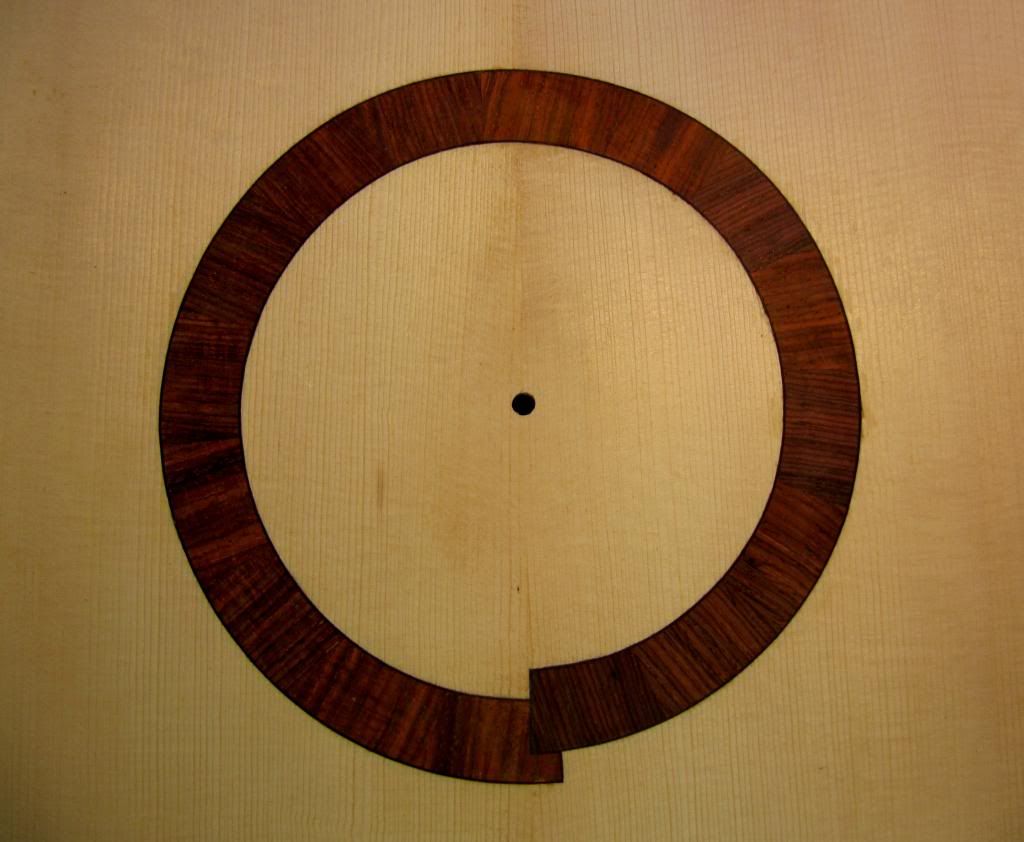When making the rosette I wiped the segments with Xylene before gluing them in with Titebond Original. Over a month later I later sprayed on one coat of shellac and two of pre-catalyzed lacquer. I know Titebond isn't much cop when it comes to Cocobolo, but this is almost as if it's like oozed out between the joins like some sort of horrible puss or something. I'm wondering if like there's a reaction happened here or oils have seeped out of wood or what?
I'm totally stumped by this, my prize guitar now looks awful seems like there's little I can really do but what went wrong?
Weird nasty yellow raised joins :@

Original rosette all joins look good ect.
